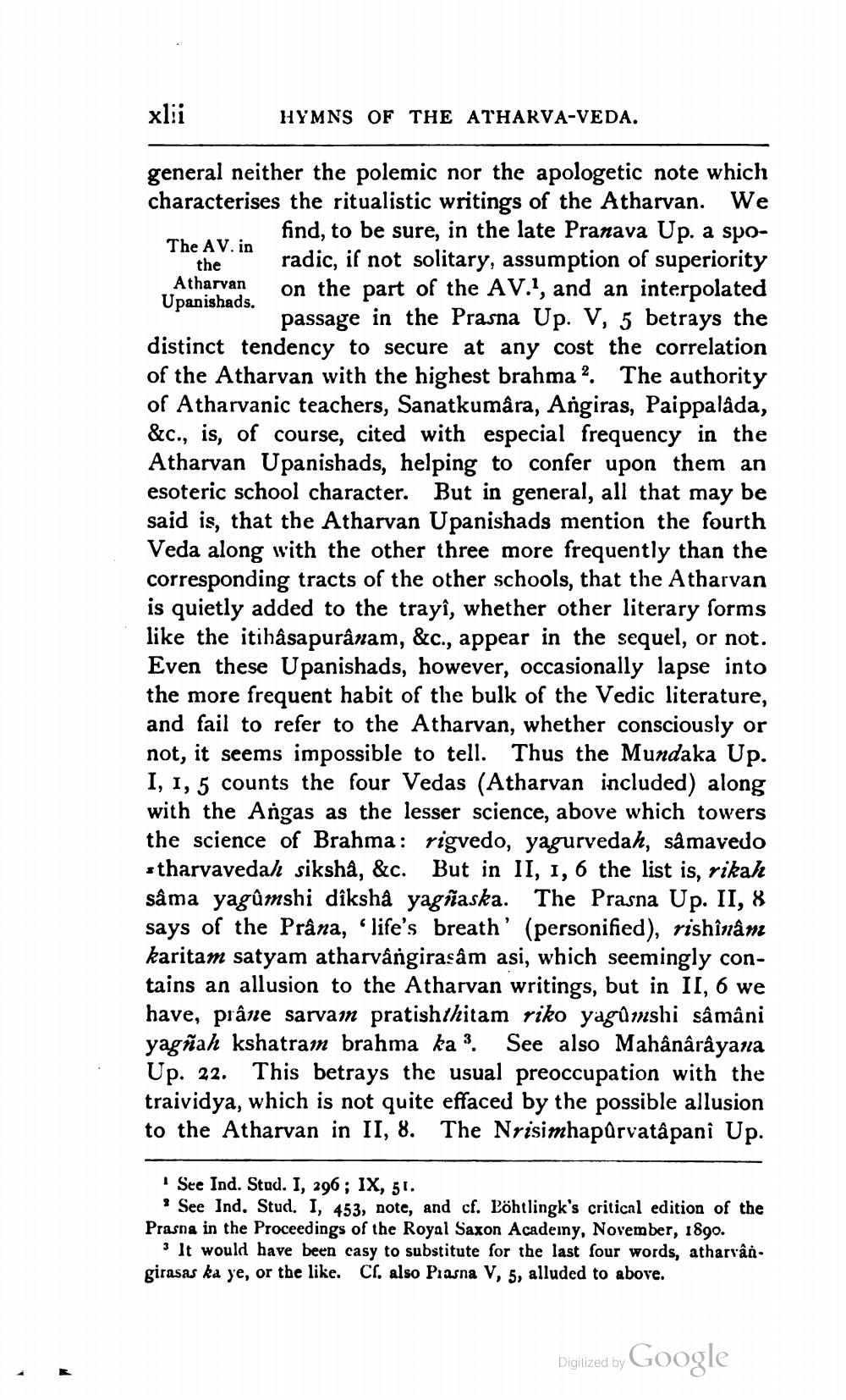________________
xlii
HYMNS OF THE ATHARVA-VEDA.
Atharvan
general neither the polemic nor the apologetic note which characterises the ritualistic writings of the Atharvan. We
find, to be sure, in the late Pranava Up. a spoThe AV. in
the radic, if not solitary, assumption of superiority Upanishads.
on the part of the AV.', and an interpolated
e passage in the Prasna Up. V, 5 betrays the distinct tendency to secure at any cost the correlation of the Atharvan with the highest brahma ? The authority of Atharvanic teachers, Sanatkumâra, Angiras, Paippalada, &c., is, of course, cited with especial frequency in the Atharvan Upanishads, helping to confer upon them an esoteric school character. But in general, all that may be said is, that the Atharvan Upanishads mention the fourth Veda along with the other three more frequently than the corresponding tracts of the other schools, that the Atharvan is quietly added to the trayî, whether other literary forms like the itihâsapurânam, &c., appear in the sequel, or not. Even these Upanishads, however, occasionally lapse into the more frequent habit of the bulk of the Vedic literature, and fail to refer to the Atharvan, whether consciously or not, it seems impossible to tell. Thus the Mundaka Up. I, 1, 5 counts the four Vedas (Atharvan included) along with the Angas as the lesser science, above which towers the science of Brahma: rigvedo, yagurvedah, såmavedo stharvavedah sikshâ, &c. But in II, 1, 6 the list is, rikah sâma yagûmshi diksha yagñaska. The Prasna Up. II, 8 says of the Prâna, life's breath' (personified), rishînân karitam satyam atharvangirasam asi, which seemingly contains an allusion to the Atharvan writings, but in II, 6 we have, prâne sarvam pratishthitam riko yagůmshi sâ mâni yagñah kshatrain brahma ka? See also Mahânârayana Up. 22. This betrays the usual preoccupation with the traividya, which is not quite effaced by the possible allusion to the Atharvan in II, 8. The Nrisimhapūrvatâpani Up.
I See Ind. Stud. I, 296; IX, 51.
* See Ind. Stud. I, 453, note, and cf. Löhtlingk's critical edition of the Prasna in the Proceedings of the Royal Saxon Academy, November, 1890.
3 It would have been casy to substitute for the last four words, atharvaagirasas ka ye, or the like. Cl. also Prasna V, 5, alluded to above.
Digized by Google
Digitized by




